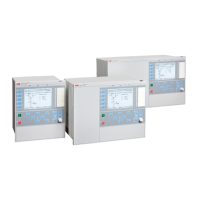Power to the power plant auxiliaries may come from a station service transformer
connected to the primary side of the step-up transformer. Power may also come from a
start-up service transformer connected to the external network. One has to design the
reverse power protection so that it can detect reverse power independent of the flow of
power to the power plant auxiliaries.
Hydro turbines tolerate reverse power much better than steam turbines do. Only
Kaplan turbine and bulb turbines may suffer from reverse power. There is a risk that
the turbine runner moves axially and touches stationary parts. They are not always
strong enough to withstand the associated stresses.
Ice and snow may block the intake when the outdoor temperature falls far below zero.
Branches and leaves may also block the trash gates. A complete blockage of the intake
may cause cavitations. The risk for damages to hydro turbines can justify reverse
power protection in unattended plants.
A hydro turbine that rotates in water with closed wicket gates will draw electric power
from the rest of the power system. This power will be about 10% of the rated power. If
there is only air in the hydro turbine, the power demand will fall to about 3%.
Diesel engines should have reverse power protection. The generator will take about
15% of its rated power or more from the system. A stiff engine may require perhaps
25% of the rated power to motor it. An engine that is well run in might need no more
than 5%. It is necessary to obtain information from the engine manufacturer and to
measure the reverse power during commissioning.
Gas turbines usually do not require reverse power protection.
Figure
208 illustrates the reverse power protection with underpower IED and with
overpower IED. The underpower IED gives a higher margin and should provide better
dependability. On the other hand, the risk for unwanted operation immediately after
synchronization may be higher. One should set the underpower IED to trip if the active
power from the generator is less than about 2%. One should set the overpower IED to
trip if the power flow from the network to the generator is higher than 1%.
Section 3 1MRK504116-UUS C
IED application
486
Application manual

